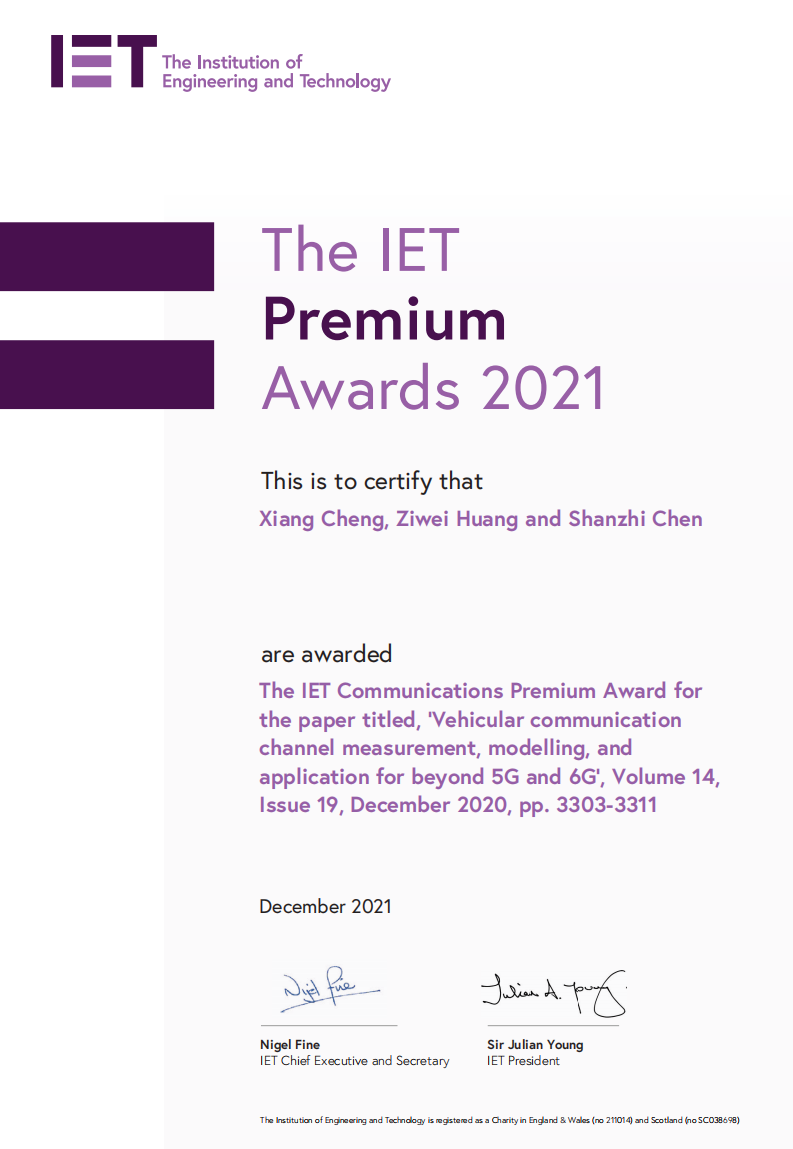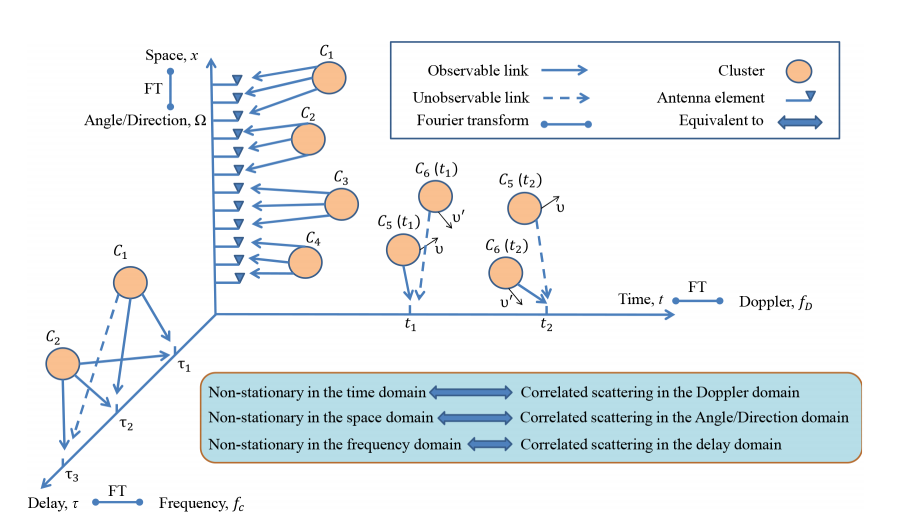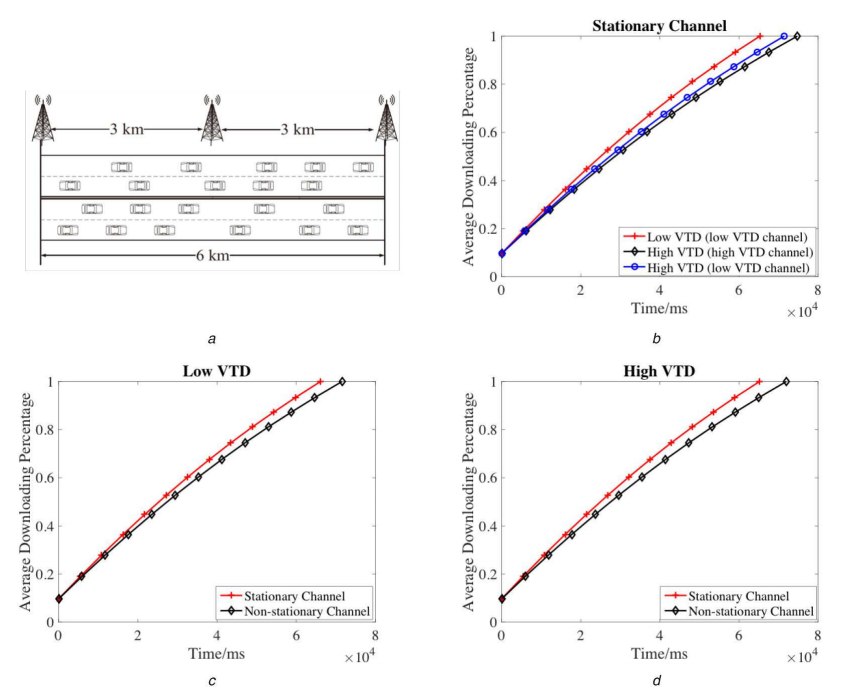Recently, the paper entitled “Vehicular Communication Channel Measurement, Modeling, and Application for Beyond 5G and 6G” by Xiang Cheng, Ziwei Huang, and Shanzhi Chen won the best paper award (Premium Award) in IET Communications.

In beyond fifth-generation (B5G) and sixth-generation (6G), to support more potential applications associated with future vehicles, such as autonomous and intelligent vehicles, vehicular communication systems have been under intense research. As the foundation of vehicular communication systems, research on vehicular channels is indispensable. Therefore, it is urgent to carry out comprehensive research on the B5G/6G vehicular communication channel.
The group carried out detailed B5G/6G vehicular communication channel measurement and modeling, and analyzed the channel three-dimensional (3D) space-time-frequency non-stationary characteristics from the mathematical and physical perspectives for the first time. First, from the mathematical perspective, with the employment of massive multiple-input multiple-output (MIMO) technology, the vehicular channel statistics change in the space domain, i.e., space non-stationarity. Second, the complex and rapidly-changing characteristics of vehicular communications result in the fact that vehicular channel statistics change in the time domain, i.e., time non-stationarity. Third, with the utilization of millimeter wave (mmWave) communication technology, the vehicular channel statistics change in the frequency domain, i.e., frequency non-stationarity. Furthermore, the group explored the physical mechanism of space-time-frequency non-stationarity of vehicular channels. The results, as shown in Fig. 1, indicated that, in the space-time-frequency non-stationary vehicular channel, clusters evolve in the large-scale antenna array domain, and thus different antenna elements have different visible cluster sets. Meanwhile, clusters also evolve in the time domain, and thus vehicular channels have different visible cluster sets at different time instants. In mmWave communications, clusters show the correlation in the delay domain, and thus vehicular channels exhibit correlated scattering and show frequency non-stationarity. In addition to the space-time-frequency non-stationary characteristics, the group found that a physical feature in vehicular communications, i.e., vehicular traffic density (VTD), has a significant impact on the vehicular channel characteristics.

Fig. 1. Physical mechanism underlying the channel space, time, and frequency non-stationarity
To integrate the modeling of the vehicular channel characteristics, i.e., 3D space-time-frequency non-stationarity, and the capturing of the physical feature in vehicular communications, i.e., VTD, the group utilizes the birth-death process algorithm, visibility region method, and machine learning. In this case, clusters in the environment are divided into static clusters and dynamic clusters, and the correlated scattering and complex cluster evolution are further captured. As a consequence, the B5G/6G vehicular channel is modeled in a low-complexity and accurate manner. Furthermore, for the first time, the group integrated the B5G/6G vehicular channel application research based on the vehicular channel measurement and modeling. The results, as shown in Fig. 2, indicated that channel non-stationarity and VTD have a significant impact on the upper-layer application design of vehicular communications.

Fig. 2. The impact of channel non-stationarity and VTD on the upper-layer application design of vehicular communications. (a) Simulation scenario. (b) Average downloading percentage of data packets under different VTDs. (c) Average downloading percentage of data packets in stationary channels and non-stationary channels under low VTDs. (d) Average downloading percentage of data packets in stationary channels and non-stationary channels under high VTDs.
The group uses the combination of industry, education, and research to coordinate and integrate the functions and resource advantages of scientific research, education, and production in different social divisions. The group's research on the vehicular communication channel provides some useful suggestions and guidance for the design, performance evaluation, and upper-layer application design of the future B5G/6G vehicular communication system. The research work has been strongly supported by Ministry National Key Research and Development Project and National Science Foundation Project in China.
IET (The Institution of Engineering and Technology) is the largest international professional society in Europe and the second largest in the world.IET Communicationsjournal is an authoritative journal in the field of communications under the IET Society, and it is also an SCI-indexed journal. The journal selects the only paper from all the papers published in the past two years as the best paper award (Premium Award) every year, and the winning rate is less than 0.1%. This award is one of the most important international academic awards in the field of communications.
To access the full paper:
https://ietresearch.onlinelibrary.wiley.com/doi/10.1049/iet-com.2020.0531
To learn more about the Award:
https://ietresearch.onlinelibrary.wiley.com/hub/journal/17518636/homepage/prizes




